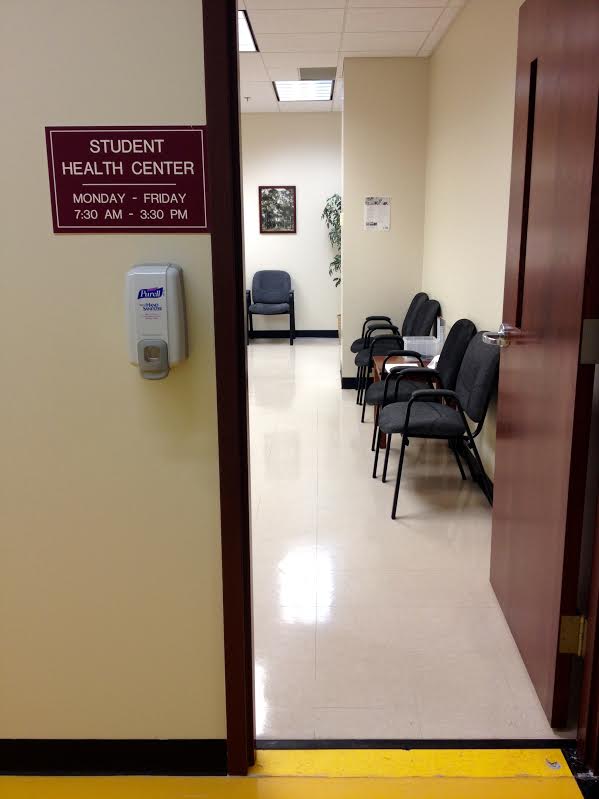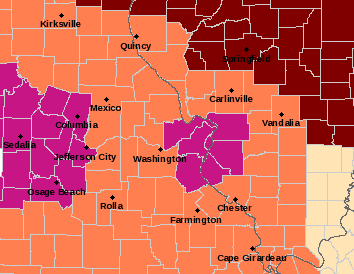Flu Season Hits Midwest
January 12, 2015
Lauren Whan | Staff Reporter
January 12, 2015; 12:30 p.m.
More people will likely be buying tissues, medicine and thermometers as the flu continues to spread across Missouri and the rest of the Midwest.
The Centers for Disease Control and Prevention reported on Jan. 5 that 43 states are experiencing an outbreak, in which 21 children have died from the flu.
Darrien Morrison, an LPN at Blessing Hospital in Quincy, Illinois works with pediatric patients and said she has seen more children coming in to be treated for flu-like symptoms.
“It’s my first time working during the flu season, but as a precautionary measure all employees are required to get a flu shot,” Morrison said.
She said children are indoors more at home, school and daycare during the winter which allows the germs to spread more easily.
Lindenwood University geared up for the flu season during the fall semester on the main campus as the Student Health Center offered $25 flu vaccinations. Director of Graduate Nursing Programs Deb Kiel said college students should receive flu shots because students living in close quarters like dorms can quickly spread the flu among other residents.
“I think that it is great that the Student Health Center offers a flu vaccine for $25,” Kiel said. “I also know that it is available in other community venues like Walgreens and Costco. Each of these venues also charge a fee for the flu vaccine and the price varies. So if you are really motivated to get flu vaccine, you can shop around to find the best price.”
Lindenwood Junior Christine Kampmann said she normally never gets the flu shot, but this year was different because she was pregnant with her daughter Myla Anne. Even though she got the vaccine, Kampmann said she still experienced flu symptoms of fever, chills and body aches.
“I still go out and shop during flu season. I always felt like if I was going to get sick, I’d get sick. I also work in a preschool, so I’m around those germs all the time.”
Lindenwood Senior Brianna Miller said it was necessary for her to see her doctor after getting the flu in December.
“I ended up going to my doctor to get an anti-nausea shot which helped me to stop throwing up. After that I could finally keep liquids down and then I took Tamiflu and anti-nausea pills.”
Miller is hesitant to return to Lindenwood as more flu cases are being reported. She has asthma which makes breathing difficult when she has the flu. Even though she didn’t get this year’s flu shot, she said she is very nervous to get sick again and will be carrying hand sanitizer.
The Centers for Disease Control and Prevention reports there are three types of influenza viruses: A, B and C. Human influenza A and B viruses are the ones that cause seasonal outbreaks of the flu almost every winter. Influenza type C infections typically cause a mild respiratory illness and are not believed to cause widespread epidemics.
As students return from winter break, they can follow a few simple steps to help prevent themselves and others from getting the flu.
Step 1: Take time to get a flu vaccine.
• The CDC recommends a yearly flu vaccine as the first and most important step in protecting against flu viruses.
Step 2: Take everyday preventive actions to stop the spread of germs.
• Wash your hands often with soap and water.
• Avoid touching your eyes, nose and mouth as germs easily spread this way.
• Avoid contact with other people if you or another person is sick. If this isn’t possible, disinfect surfaces and use hand sanitizer.
Step 3: Take flu antiviral drugs if your doctor prescribes them.
• Antiviral drugs are different from antibiotics. They are prescription medicines that can make the illness milder and shorten the time you are sick.
• The CDC reports flu symptoms can include fever, cough, sore throat, runny or stuffy nose, body aches, headache, chills, fatigue, vomiting or diarrhea.



















